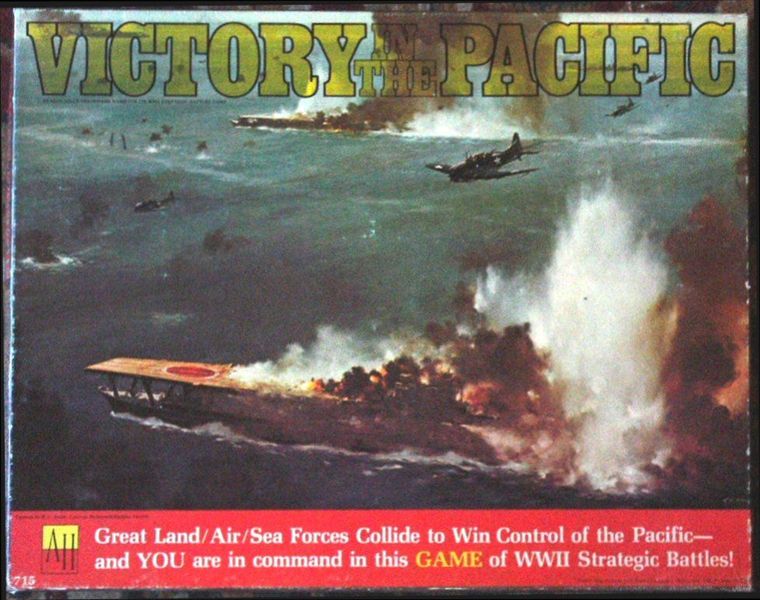Victory in the Pacific (1977) Board Game
Victory in the Pacific is a classic board game that was first released in in 1977. It is a two-player game that simulates naval and air battles during World War II in the Pacific theater. The game is well-known for its strategic depth and historical accuracy, making it a favorite among war game enthusiasts.
Game Components of Victory in the Pacific
How To Setup Victory in the Pacific
Setting up the game involves placing the initial forces of both the Japanese and Allied players according to the game’s setup rules. The Japanese player starts with a larger fleet, while the Allied player begins with fewer ships but receives reinforcements over time. Special rules, such as the Pearl Harbor Air Raid, are also applied at the beginning of the game. Players commit their units to specific sea zones, and each turn represents four to six months, except for the first turn which covers only December 1941.
Gameplay Mechanics and Game Objective
Mechanics
Game Objective
Player Experience
**Victory in the Pacific** offers a strategic and operational level of play, with a historical feel despite its relatively simple mechanics. Players must balance immediate needs with long-term strategies, particularly the Japanese player who must manage a declining fleet and the Allied player who must patiently build up forces. The game’s mechanics, such as the choice between Patrollers and Raiders, and the distinction between Day and Night actions, add to the game’s depth and historical accuracy.
Pros
Cons
Personal Thoughts on Victory in the Pacific
**Victory in the Pacific** is a classic wargame that remains appealing today, especially for those interested in the Pacific Theater of World War II. It is an excellent introduction to wargaming, offering a light yet engaging experience. The game’s ability to recreate the entire strategic campaign in 3-5 hours makes it a great choice for players looking for a balanced mix of strategy and historical context. However, for those seeking high realism or complex gameplay, other games might be more suitable.
We are supported by our audience. When you purchase through links on our site, we may earn an affiliate commission, at no extra cost for you. Learn more.

